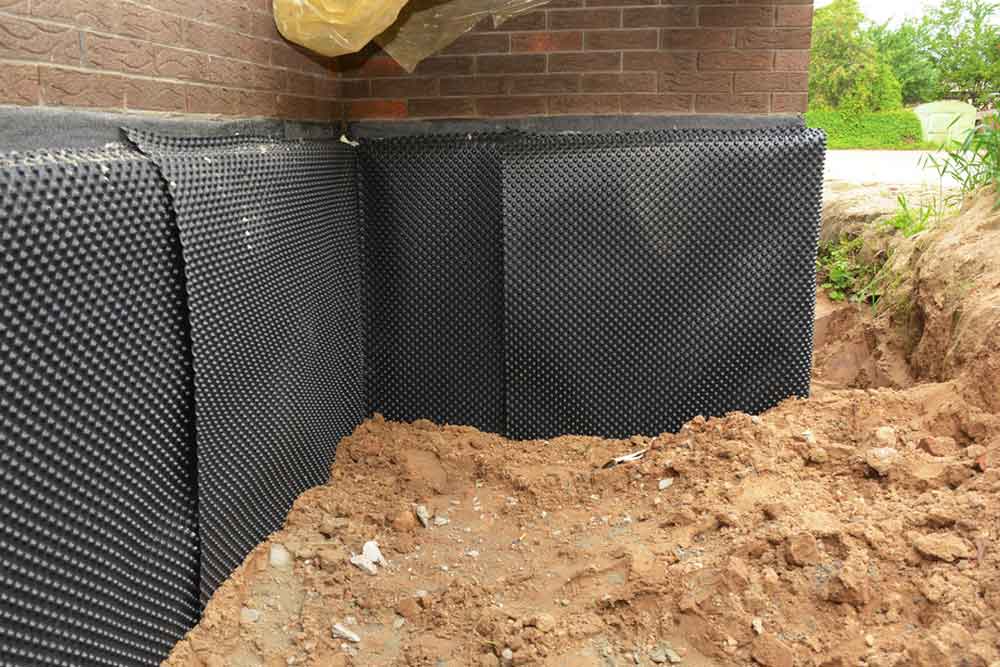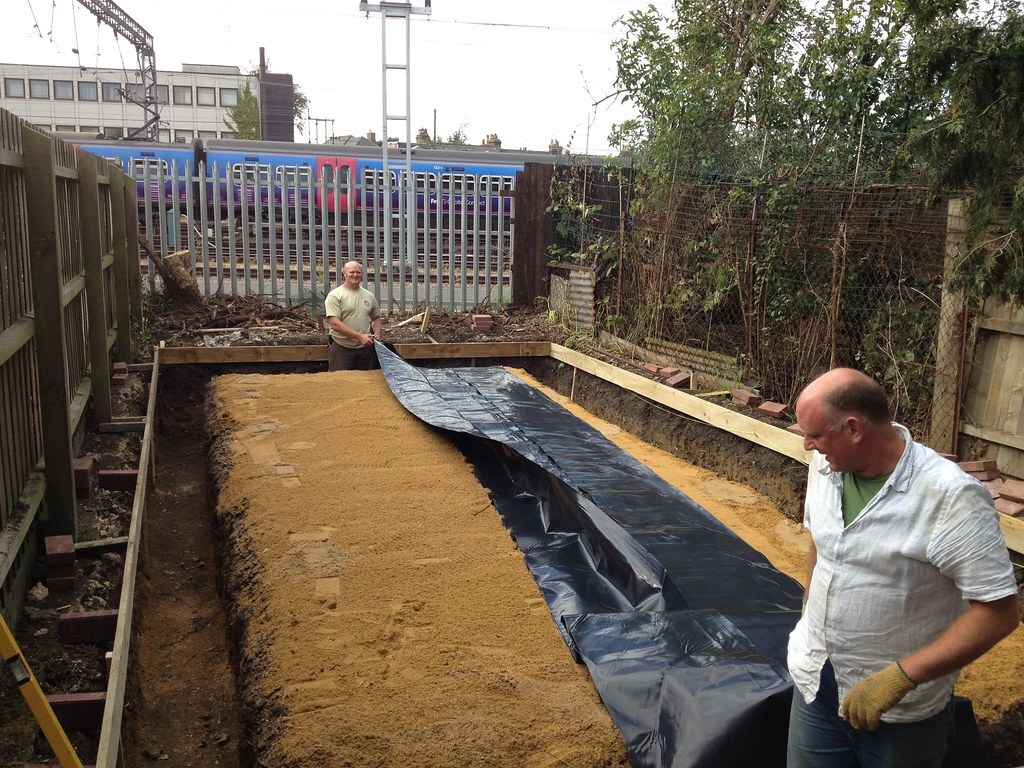Checking Out the Numerous Methods and Solutions for Effective Damp Proofing
Moisture in buildings presents significant obstacles to both structural stability and indoor air quality. Various techniques and solutions have emerged to fight this pervasive problem. From traditional damp-proof membranes to cutting-edge chemical treatments, each approach uses one-of-a-kind benefits. Recognizing these options is essential for effective moisture control. Picking the best remedy depends on specific building conditions and requirements, prompting further exploration right into the most efficient wet proofing methods available.
Understanding the Root Causes Of Moisture
Wetness can arise from numerous sources, comprehending these reasons is important for effective remediation. Typically, dampness stems from 3 main sources: climbing moist, penetrating moist, and condensation. Rising wet takes place when groundwater travels up via porous materials, such as brick or stone, commonly because of an absence of an effective barrier (mould treatment newcastle). Permeating moist is normally caused by external factors, consisting of roof leakages, damaged rain gutters, or harmed wall surfaces, allowing water to penetrate a residential property. Condensation, on the various other hand, results from excess moisture in the air, typically intensified by poor air flow and temperature level differences, leading to water beads basing on surface areas. Identifying these underlying concerns is necessary, as each type of wetness requires a customized method for removal. Appropriate evaluation helps in identifying the most reliable solutions, inevitably protecting the structural integrity of a building and enhancing indoor air top quality
Standard Damp-Proof Membranes

Chemical Damp-Proofing Solutions
Chemical damp-proofing services provide a cutting-edge strategy to avoid moisture intrusion in buildings. These methods typically entail the application of liquid chemicals that permeate stonework and form a barrier versus rising wet. Frequently utilized chemicals consist of silanes, siloxanes, and other water-repellent representatives that react with surface materials to develop a hydrophobic layer.The application procedure usually calls for exploration openings right into the walls, infusing the chemical remedy, and allowing it to heal. This method is specifically useful for older frameworks where typical damp-proof membrane layers might be impractical. In addition, chemical damp-proofing can be less disruptive and a lot more cost-effective than extensive restoration projects.While effective, these services rely on correct application and ecological conditions for peak efficiency. Routine upkeep and surveillance are necessary to ensure the longevity of the damp-proofing therapy. Overall, chemical damp-proofing represents a functional alternative for securing buildings versus moisture-related damage
Dental Caries Wall Building Techniques
Tooth cavity wall surface building and construction techniques provide many advantages, especially in wetness control and energy efficiency. By incorporating an air gap between two layers of stonework, these wall surfaces successfully mitigate water access while improving insulation. This combination not only shields frameworks from wetness however likewise adds to reduced power intake.
Advantages of Cavity Walls
When taking into consideration effective damp proofing approaches, the benefits of tooth cavity walls stand out plainly. Dental caries walls are composed of 2 separate layers, developing an air void that successfully decreases moisture penetration. This design reduces the threat of dampness, as the external wall serves as an obstacle against rain and water ingress. Additionally, tooth cavity wall surfaces enhance thermal insulation, which adds to energy effectiveness by lowering warmth loss. They likewise supply audio insulation, helping to develop a quieter indoor setting. The air void allows for air flow, which helps in wetness control and decreases the possibility of mold and mildew development. These benefits not only improve the general convenience of a structure however likewise add to its long life and structural stability.
Dampness Control Techniques
Reliable moisture control approaches are critical in cavity wall building to guarantee lasting security against dampness. One primary technique entails the consolidation of weep holes, which help with water drainage from the dental caries, stopping buildup. Furthermore, making use of breathable membrane layers can aid manage moisture degrees while allowing caught vapor to leave. Correct positioning of insulation is likewise important, as it must not block water drainage courses. Furthermore, making certain that the external leaves of the dental caries wall are built with water-resistant products improves general sturdiness. Regular upkeep checks are crucial to recognize any kind of obstructions or damages early, safeguarding the framework's integrity. Eventually, a mix of these techniques creates a durable protection versus moisture breach in tooth cavity walls.
Insulation and Power Effectiveness
Insulation plays a crucial function in enhancing energy efficiency within dental caries wall surface building. By including shielding materials, these wall surfaces develop a thermal obstacle that lessens warmth loss and decreases power usage. Efficient insulation not only aids maintain a steady interior temperature level but likewise reduces the danger of moisture, as it stops condensation within the wall cavity. Various methods, such as the usage of inflexible foam boards or mineral wool, can be used to achieve suitable insulation efficiency. Additionally, appropriate installation is necessary to ensure that spaces and voids are minimized, which can otherwise compromise energy effectiveness. Eventually, a well-insulated cavity wall surface adds significantly to overall sustainability and reduces heating & cooling prices for home owners.
Outside Damp Proofing Approaches
Outside damp proofing approaches are important for here securing frameworks from dampness seepage. Two efficient strategies include the application of waterproof membrane layers and the installment of French drains. These services help minimize water buildup and maintain the integrity of structures.
Waterproof Membrane Layer Application
While different methods exist for stopping dampness access, the application of water resistant membrane layers stays a very efficient exterior moist proofing strategy. These membrane layers are commonly made from materials such as polyethylene, rubber, or customized asphalt, offering a robust barrier versus water penetration. The installation procedure includes using the membrane layer to the outside surfaces of wall surfaces or foundations, guaranteeing full coverage to prevent leaks. Correct bond and sealing at joints are essential to making the most of efficiency. Water-proof membrane layers can be used in different types, consisting of liquid coverings and sheet membranes, permitting adaptability based on the particular requirements of the framework. This technique not only shields buildings from dampness but likewise improves their longevity and structural stability.
French Drain Installment
One efficient technique for taking care of groundwater and preventing moisture buildup around a structure's structure is the installment of a French drain. This drain system consists of a trench filled with crushed rock and a perforated pipeline that reroutes surface area water away from the foundation. Appropriate installation needs careful preparation, making sure that the drain slopes away from the framework to assist in suitable water flow. Additionally, the place of the drainpipe is crucial; it should be placed in areas susceptible to merging or excess dampness. Regular upkeep, consisting of clearing particles from the gravel and making certain the pipe continues to be unblocked, is crucial for lasting efficiency. Inevitably, a well-installed French drain can significantly minimize the danger of water-related concerns in structures and basements.
Interior Waterproofing Methods
Interior waterproofing approaches are vital for securing a structure's inside from wetness infiltration and prospective water damage. These approaches normally involve the application of customized products and techniques developed to create a moisture barrier within the structure. One usual technique is making use of waterproof finishings or sealants on wall surfaces and floorings, which protect against dampness from passing through surfaces.Additionally, installing interior drainage systems, such as sump pumps, can successfully manage water accumulation in basements and crawl spaces. An additional method involves making use of vapor obstacles, which are mounted to prevent wetness movement from the ground into living spaces.Moreover, addressing any fractures or voids in walls or foundations with suitable sealers guarantees a detailed defense against water breach. By executing these interior waterproofing techniques, homeowner can substantially decrease the danger of mold growth, structural damage, and other moisture-related issues. Correct implementation of these techniques is important for long-term security and building stability.
Normal Maintenance and Assessment Practices
Normal upkeep and evaluation methods are crucial for ensuring the lasting efficiency of wet proofing remedies in any kind of structure. Routine checks make it possible for residential property owners to determine very early signs of dampness invasion, such as peeling off paint, mold development, and musty odors. These signs can signify underlying problems that call for prompt attention.Inspections ought to be carried out at least annually, focusing on at risk locations like cellars, crawl spaces, and outside walls. During these evaluations, home proprietors ought to take a look at sealants, water drainage systems, and ventilation to validate they operate correctly.Additionally, preserving downspouts and gutters is essential, as stopped up systems can lead to water accumulation near the structure. Executing a regular upkeep routine, in addition to prompt repairs, can significantly extend the lifespan of wet proofing procedures and secure the structural honesty of the building. Aggressive measures inevitably add to the total health and wellness of the living setting.
Often Asked Inquiries
Exactly How Lengthy Does Damp Proofing Normally Last?
The duration of moist proofing performance varies, generally lasting between 20 to 50 years. Factors such as application top quality, ecological conditions, and maintenance methods considerably influence the long life of the wet proofing therapy.

Can I Damp Evidence My Home Myself?
The individual contemplated the expediency of DIY damp proofing. With correct research and the ideal materials, it is possible. However, they likewise recognized the importance of professional support to assure durable performance and protect against future problems.
What Are the Indicators of Inadequate Damp Proofing?
Indicators of ineffective wet proofing include persistent mildewy odors, visible mold development, peeling paint, damp patches on wall surfaces, and timber decay - mould removal newcastle. Homeowners should resolve these concerns quickly to avoid further damages and health and wellness worries
Does Damp Proofing Affect Indoor Air Quality?

Just How Much Does Professional Damp Proofing Price?
Professional damp proofing costs differ considerably, generally varying from $1,000 to $5,000 relying on the residential property's dimension, the degree of the damp problem, and picked techniques. Each scenario calls for a tailored assessment for accurate rates. Generally, dampness stems from three primary sources: increasing moist, passing through damp, and condensation. When taking into consideration reliable damp proofing methods, the advantages of dental caries walls stand out prominently. Outside moist proofing techniques are crucial for safeguarding frameworks from wetness infiltration. While numerous approaches exist for avoiding moisture access, the application of water resistant membranes stays a very efficient external damp proofing strategy. Indications of inadequate wet proofing include relentless moldy smells, visible mold development, peeling off paint, moist spots on wall surfaces, and wood decay.